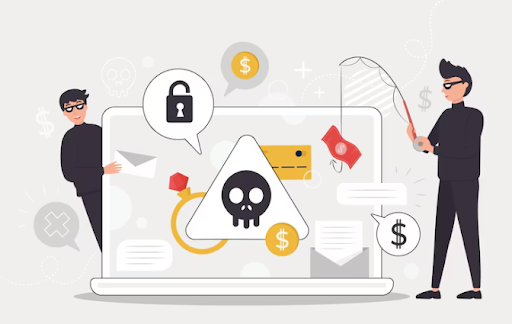
In the fast-evolving landscape of digital threats, a massive phishing scam has recently come to light, sending shockwaves through the cybersecurity community. The scam’s scale and sophistication have raised alarms, highlighting vulnerabilities that even the most stringent defenses failed to guard against. This blog post aims to dissect the scam, understand its implications for IT professionals, and offer actionable strategies to mitigate such risks in the future.
Introduction
The latest phishing news has revealed a cyberattack of unprecedented magnitude, affecting organizations worldwide. This phishing scam has not only compromised sensitive data but has also shaken the confidence of businesses and individuals in their cybersecurity measures. In this post, we’ll explore the intricacies of the scam, its impact on IT professionals, and steps to bolster defenses against such attacks in the future.
Understanding the Phishing Scam
The Scam Unveiled
Phishing scams have been around for years, but this latest attack stands out due to its scale and sophistication. Cybercriminals executed the scam by creating highly convincing emails and websites that mimicked legitimate organizations. Unsuspecting victims clicked on links, entered sensitive information, and unknowingly handed over their credentials to attackers.
Execution Tactics
The attackers employed advanced social engineering techniques, making their emails appear authentic. They used spoofed email addresses, personalized messages, and even mimicked official websites to lower the victims’ guard. This level of detail in the execution made it challenging for even seasoned IT professionals to detect the fraudulent activity.
Exploited Vulnerabilities
The phishing scam exploited common vulnerabilities such as lack of email authentication protocols, outdated software, and insufficient employee training. Additionally, the attackers leveraged zero-day exploits, targeting undisclosed security flaws. By exploiting these weaknesses, they managed to infiltrate systems and gain unauthorized access to sensitive data.
Implications for IT Professionals
Increased Risks
For IT professionals, this phishing scam underscores the heightened risks they face daily. The attack’s success highlights the need for constant vigilance and proactive measures to safeguard sensitive information. IT professionals must stay updated on the latest phishing news and trends to anticipate potential threats.
Impact on Businesses
The scam’s repercussions extend to businesses of all sizes. Compromised credentials can lead to data breaches, financial losses, and damage to reputation. IT professionals bear the responsibility of protecting their organizations from these risks, making it imperative to implement robust cybersecurity protocols.
Challenges in Detection
Detecting sophisticated phishing scams poses significant challenges. Traditional security measures may not suffice against advanced tactics employed by cybercriminals. IT professionals must adopt a multi-layered approach, combining technology with employee awareness and training to effectively counter such threats.
Steps to Mitigate the Scam’s Effects
Enhancing Email Security
Implementing email authentication protocols such as SPF, DKIM, and DMARC can significantly reduce the risk of phishing emails reaching employees’ inboxes. These protocols verify the sender’s authenticity and help filter out malicious emails before they cause harm.
Employee Training
Human error remains a critical factor in the success of phishing scams. Regular training sessions can educate employees about recognizing phishing attempts, verifying the authenticity of emails, and reporting suspicious activity. Informed employees serve as the first line of defense against cyberattacks.
Utilizing Advanced Threat Detection
Deploying advanced threat detection tools that leverage machine learning and artificial intelligence can enhance an organization’s ability to identify and respond to phishing attempts in real-time. These tools analyze patterns and behaviors, providing early warnings of potential threats.
Response to the Scam
Law Enforcement Involvement
The immediate response to the scam involved collaboration between law enforcement agencies and cybersecurity experts. Investigations are underway to trace the origins of the attack, identify the perpetrators, and bring them to justice. This collaborative effort highlights the importance of a united front against cybercrime.
Cybersecurity Experts’ Role
Cybersecurity experts played a crucial role in containing the damage caused by the scam. Their expertise in analyzing the attack vectors, implementing countermeasures, and guiding affected organizations through the recovery process was instrumental in mitigating the impact.
Public Awareness Campaigns
Raising public awareness about the phishing scam and its tactics is essential to prevent future incidents. Information campaigns can educate individuals and businesses about the signs of phishing, best practices for protection, and resources available for reporting cyber threats.
Long-Term Lessons and Strategies
Building Resilience
The success of this phishing scam emphasizes the need for continuous improvement in cybersecurity measures. Organizations must invest in building resilient systems that can withstand evolving threats. Regular security audits, vulnerability assessments, and penetration testing can identify and address weaknesses before they are exploited.
Strengthening Cybersecurity Culture
Creating a culture of cybersecurity within organizations is vital. IT professionals should foster an environment where security is a shared responsibility, encouraging employees to prioritize safe online practices. This cultural shift can significantly reduce the risk of successful phishing attacks.
Adopting a Holistic Approach
A holistic approach to cybersecurity involves integrating various strategies, tools, and practices to create a comprehensive defense mechanism. IT professionals should consider adopting frameworks such as the NIST Cybersecurity Framework, which provides guidelines for identifying, protecting, detecting, responding to, and recovering from cyber threat news.
Conclusion
The recent massive phishing scam serves as a stark reminder of the persistent and evolving threat landscape. For IT professionals, staying ahead of cybercriminals requires a proactive and multi-faceted approach. By understanding the intricacies of the scam, its implications, and effective mitigation strategies, IT professionals can better protect their organizations and contribute to a safer digital ecosystem. Stay vigilant, stay informed, and stay secure.